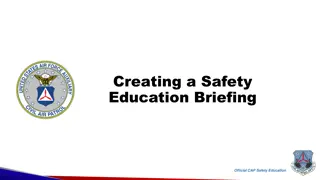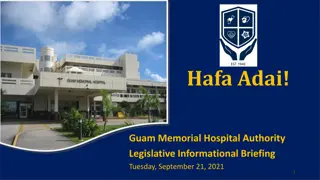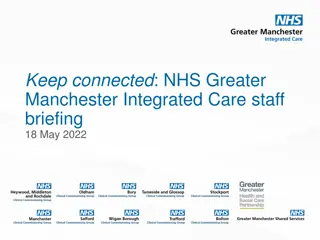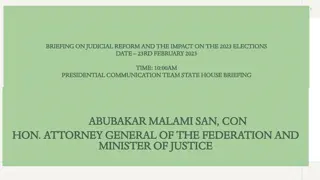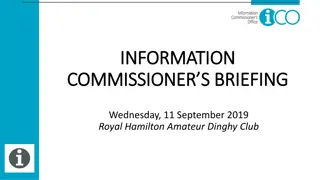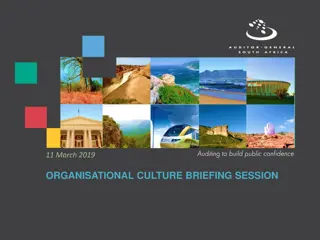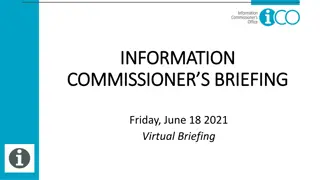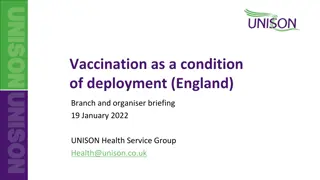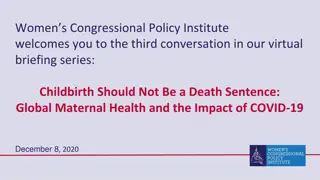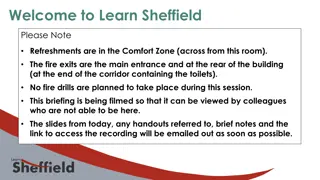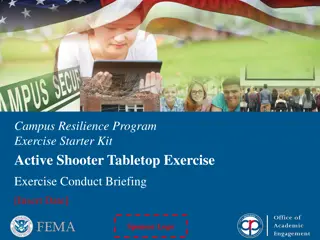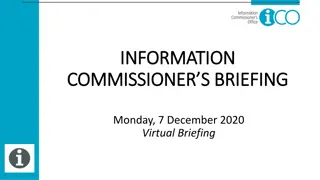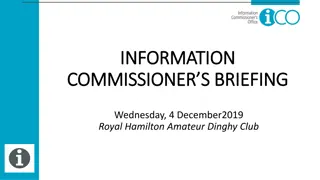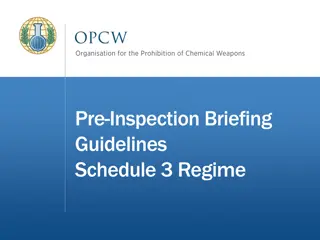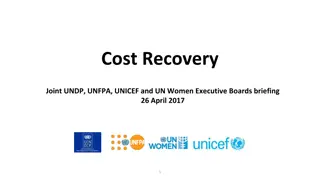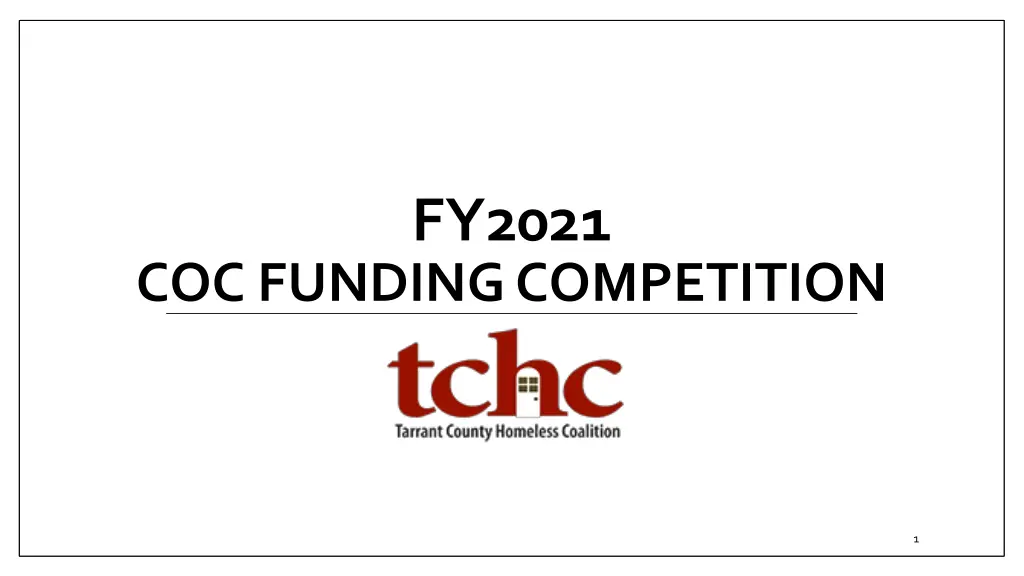
Ending Homelessness: HUD CoC Program FY2021 Overview
The Continuum of Care (CoC) Program under HUD aims to end homelessness by providing funding for rehousing efforts, promoting access to mainstream programs, and optimizing self-sufficiency. Learn about CoC funding competition, program description, application scores, policy priorities, and resources for FY2021.
Download Presentation

Please find below an Image/Link to download the presentation.
The content on the website is provided AS IS for your information and personal use only. It may not be sold, licensed, or shared on other websites without obtaining consent from the author. If you encounter any issues during the download, it is possible that the publisher has removed the file from their server.
You are allowed to download the files provided on this website for personal or commercial use, subject to the condition that they are used lawfully. All files are the property of their respective owners.
The content on the website is provided AS IS for your information and personal use only. It may not be sold, licensed, or shared on other websites without obtaining consent from the author.
E N D
Presentation Transcript
FY2021 COC FUNDING COMPETITION 1
CoC Program Description The Continuum of Care (CoC) Program (24 CFR part 578) is designed to promote a community-wide commitment to the goal of ending homelessness; to provide funding for efforts by nonprofit providers, states, and local governments to quickly rehouse homeless individuals, families, persons fleeing domestic violence, dating violence, sexual assault, and stalking, and youth while minimizing the trauma and dislocation caused by homelessness; to promote access to and effective utilization of mainstream programs by homeless individuals and families; and to optimize self-sufficiency among those experiencing homelessness. 2
TX-601 scored 165 or 83% FY18 TX-601 scored 183 or 92% 10% decrease over FY18 Highest nationwide score 186.5 Lowest nationwide score 37.25 Median nationwide score 150.5 Nationwide median score decreased by 6% FY18 to FY19 FY19 Competition Recap TX-601 received $13,604,830 FY18 ($ 13,306,444) 2% increase or $298,386 3
CoCs with higher application scores: Reduced Homelessness in their communities Improved in HUD System Performance Measures Used performance criteria to rank projects Used Housing First practices Increased PSH and RRH units Reallocated lower performing projects FY19 Recap Why CoC s Got an Increase in Funding 4
NOFA Resources FY2021 HUD NOFA TCHC highly encourages all interested applicants to thoroughly read the NOFA in its entirety HUD CoC Application Deadline: November 16, 2021 HUD CoC Resources CoC Program Grant Local RFP Pending Local Competition Deadline: October 8, 2021 5
HUD Policy Priorities Ending homelessness for all persons Use a Housing First approach Reduce unsheltered homelessness Improve system performance Partnering with Housing, Health, and Service Agencies Racial Equity Persons with Lived Experience 6
HUD Policy Priorities Ending homelessness for all persons To end homelessness, CoCs should identify, engage, and effectively serve all persons experiencing homelessness. CoCs should measure their performance based on local data that consider the challenges faced by all subpopulations experiencing homelessness in the geographic area (e.g., veterans, youth, families, or those experiencing chronic homelessness). CoCs should partner with housing, health care, and supportive services providers to expand housing options, such as permanent supportive housing, housing subsidies, and rapid rehousing. Additionally, CoCs should use local data to determine the characteristics of individuals and families with the highest needs and longest experiences of homelessness to develop housing and supportive services tailored to their needs. 7
HUD Policy Priorities Using a Housing First Approach Housing First prioritizes rapid placement and stabilization in permanent housing and does not have service participation requirements or preconditions. CoC Program funded projects should help individuals and families move quickly into permanent housing, and the CoC should measure and help projects reduce the length of time people experience homelessness. Additionally, CoCs should engage landlords and property owners to identify an inventory of housing available for rapid rehousing and permanent supportive housing participants, remove barriers to entry, and adopt client-centered service methods. HUD encourages CoCs to assess how well Housing First approaches are being implemented in their communities. 8
HUD Policy Priorities Reducing Unsheltered Homelessness In recent years, the number of people experiencing unsheltered homelessness has risen significantly, including a rising number of encampments in many communities across the country. People living unsheltered have extremely high rates of physical and mental illness and substance use disorders. CoCs should identify permanent housing options for people who are unsheltered. 9
HUD Policy Priorities Improving System Performance CoCs should be using system performance measures (e.g., average length of homeless episodes, rates of return to homelessness, rates of exit to permanent housing destinations) to determine how effectively they are serving people experiencing homelessness. Additionally, CoCs should use their Coordinated Entry process to promote participant choice, coordinate homeless assistance and mainstream housing, and services to ensure people experiencing homelessness receive assistance quickly, and make homelessness assistance open, inclusive, and transparent. CoCs should review all projects eligible for renewal in FY 2021 to determine their effectiveness in serving people experiencing homelessness, including cost-effectiveness. CoCs should also look for opportunities to implement continuous quality improvement and other process improvement strategies. HUD recognizes the effects of COVID-19 on CoC performance and data quality and, compared to previous CoC NOFOs, reduces the points available for rating factors related to system performance. However, HUD plans to significantly increase the points available for system performance rating factors in the FY 2022 and subsequent CoC NOFOs. 10
HUD Policy Priorities Partnering with Housing, Health, and Service Agencies CoCs should maximize the use of mainstream and other community-based resources when serving persons experiencing homelessness and: work closely with public and private healthcare organizations and assist program participants to obtain medical insurance to address healthcare needs; partner closely with PHAs to utilize coordinated entry, develop housing units, and provide housing subsidies to people experiencing homelessness. These partnerships can also help CoC Program participants exit permanent supportive housing through Housing Choice Vouchers and other available housing options. CoCs and PHAs should especially work together to implement targeted programs such as Emergency Housing Vouchers, HUD-VASH, Mainstream Vouchers, Family Unification Program Vouchers, and other housing voucher programs targeted to people experiencing homelessness. CoCs should coordinate with their housing agencies on the utilization of new HOME program resources provided through the Homelessness Assistance and Supportive Services Program that was created through the American Rescue Plan; partner with local workforce development centers to improve employment opportunities. 11
HUD Policy Priorities Racial Equity In nearly every community, Black, Indigenous, and other people of color are substantially overrepresented in the homeless population. HUD is emphasizing system and program changes to address racial equity within CoCs. CoCs should review local policies, procedures, and processes to determine where and how to address racial disparities affecting individuals and families experiencing homelessness. 12
HUD Policy Priorities Persons with Lived Experience HUD is encouraging CoCs to include in the local planning process people who are currently experiencing or have formerly experienced homelessness to address homelessness. People with lived experience should determine how local policies may need to be revised and updated, participate in CoC meetings and committees as stakeholders, provide input on decisions, and provide input related to the local competition process (e.g., how rating factors are determined). CoCs should seek opportunities to hire people with lived experience.) 13
TX-601 CoC Priorities All HUD priorities and: Dedicated PSH that is Sponsor-Based or Project-Based Projects to serve people with mental illness or substance use who cannot safely live in a normal apartment (SRO PSH, RRH, or Joint TH-RRH) Rapid Rehousing Geographic Distribution Projects that serve people with criminal records, sex offenders, behavioral health disorders 14
CoC Program Implementation Note Performance-Based Decisions CoCs cannot receive grants for new projects, other than through reallocation, unless the CoC competitively ranks projects based on how they improve system performance as outlined in Section VII.B.2.b of this NOFA; HUD will prioritize funding for CoCs that have demonstrated the ability to reallocate resources to higher performing projects. Coordination with Housing and Healthcare In the FY 2021 CoC Program Competition, CoCs may receive up to 10 bonus points on the CoC Application if the CoC Priority Listing includes new project applications created through reallocation or the CoC Bonus that utilizes housing vouchers and healthcare provided through an array of healthcare services providers. 15
CoC Consolidated Application FY 2021 CoC Application FY 2021 Project Application for each project Priority Listing Reallocation Forms New Project Listing Renewal Project Listing CoC Planning Project 16
CoC Application Scoring Project Capacity, Review & Ranking 30 Points System Performance 23 Points (down 37 points- 2021) HMIS 11 Points Point-In-Time Count 3 Points Performance & Strategic Planning 40 Points CoC Coordination & Engagement 96 Points (up 40 points- includes COVID response) Coordination with Housing and Healthcare (Bonus) 10 Points 213 Available Points 17
Project Capacity, Review & Ranking HUD will award up to 30 points to CoCs that demonstrate the existence of a coordinated, inclusive, and outcome-oriented community process for the solicitation, objective review, ranking and selection of project applications, and a process by which renewal projects are reviewed for performance and compliance with 24 CFR part 578. Objective Criteria and System Performance Measures Rapid Return to Permanent Housing and Severity of Barriers by Participants Promote Racial Equity Reallocating Projects Ranking Process 18
CoC Project Review HUD expects each CoC to implement a thorough review and oversight process at the local level for both new and renewal project applications submitted to HUD in the FY 2021 CoC Program Competition CoCs are expected to closely review information provided in each project application to ensure: all proposed program participants will be eligible for the program component type selected; the information provided in the project application and proposed activities are eligible and consistent with program requirements at 24 CFR part 578; each project narrative is fully responsive to the question being asked and that it meets all the criteria for that question as required by this NOFA; the data provided in various parts of the project application are consistent; and, all required attachments correspond to the list of attachments in e-snaps that must contain accurate and complete information that are dated between August 17, 2021 and November 16, 2021. What this means: TCHC staff will be providing more feedback and editorial comments on eSNAPS applications 19
Local Competition: Response to HUD Renewal Projects Score Card (except projects without one year of operational data) eSNAPS Any Required Documentation Allocations Committee Ranking Workgroup Renewal projects initially ranked based on score Adjustments made per CoC Ranking Policy New Project RFP responses scored by committee and ranked based on the CoC Ranking Policy Submit Final Project Ranking Recommendations to CoC Board for review New Projects RFP Narrative Responses eSNAPS Any Required Documentation 20
Tiered Funding Structure Ranking Policy HUD will continue to require Collaborative Applicants to rank all new & renewal projects into 2 tiers LOCAL POLICIES TX-601 Local Ranking Policy TX-601 Reallocation Policy 21
Tier 1 Tier 1 100% of TX-601 Annual Renewal Demand Projects in Tier 1 will be conditionally selected from the highest scoring CoC to the lowest scoring CoC (or until funding runs out), provided the projects pass both eligibility and threshold review 22
Tier 2 Tier 2: Difference between Tier 1 and maximum amount of funds CoC can apply for HUD will assign a point value to each project in Tier 2 Projects placed in Tier 2 will be assessed for eligibility and threshold requirements If a project application straddles Tier 1 & Tier 2, HUD will conditionally award the project up to the amount of funding that falls within Tier 1 as stated previously, the balance that falls into Tier 2 will be considered a Tier 2 project and scored and funded accordingly. Projects that fall into Tier 2 will be funded based on the assigned HUD point value and available funds. 23
Tier 2 HUD Score CoC Score: Up to 50 Points Direct proportion to score received on CoC Application CoC Project Ranking: Up to 40 Points Complex HUD Formula based on Tier 2 rank order and available funds Commitment to Housing First: Up to 10 Points How Project Application demonstrates it is low barrier and prioritizes rapid placement & stabilization into PH No pre-conditions to entry HMIS & SSO CAS Projects receive 10 Points 24
HUD Threshold Requirements Past Performance The ability to account for funds appropriately; Timely use of funds received from HUD; Timely submission and quality of reports submitted to HUD; Performance in assisting program participants to achieve and maintain independent living and records of success; Meeting program requirements; Meeting performance targets as established in the grant agreement; The applicant s organizational capacity to operate the project; Unwilling to accept technical assistance, made changes without HUD approval, or lost program site; and The number of persons to be served or targeted for assistance 25
HUD Threshold Requirements Threshold requirements Ineligible applicants Project Eligibility: Monitoring findings, OIG Investigation, routinely does not make quarterly drawdowns, late APR submission, etc Financial and management capacity to carry out the project Required Certifications Eligible participants HMIS participation Project Quality Thresholds: New Projects* Project Renewal Threshold: Renewal Projects Consistency with Consolidated Plan Environmental Requirements *SeeNOFA pg 44-50 26
Tiered Funding Structure Tier 1 TX-601: $15,025,767 Tier 2 TX-601: $2,620,671 (up to) $17,646,438 Maximum Award* Bonus: Up to $751,288 Bonus included in Tier 2 total CoC Planning: Up to $450,773 CoC Planning is a non-competitive grant and is considered a separate project and is therefore not included in the Tiered process Domestic Violence Bonus: Up to $1,869,383 Up to 15 percent of the Preliminary Pro Rata Need (PPRN), or a minimum of $50,000, whichever is greater, or a maximum of $5 million, whichever is less *All Funding Amounts are Estimates Pending Final Notification from HUD 27
Renewal Projects Eligible renewal projects requesting rental assistance are permitted to request less than FMR if actual rent per unit under lease is less than FMR Applicant must provide copies of the leases to establish actual rent This is intended to reduce the number of projects that have large balances of unspent funds at the end of the operating year However, project applicants for rental assistance cannot request more than 100% of the FMR New projects must request full FMR amount per unit 28
Renewal Project Expansion Renewal applicants may apply to expand current operations by adding units, beds, persons served, services provided to existing participants For expansion to be selected, renewal project application must also be selected for conditional funding Must articulate the part of the project being expanded Required to submit 3 project applications in eSNAPS Renewal project application for original project New project application with just expansion information Ensure the funding request is within allowable parameters Expansion projects are funded through reallocation, CoC Bonus or DV Bonus dollars 29
New Projects through Reallocation or Bonus Maximum Bonus Amount: $751,288 Reallocation amount: TBD Must be one of the following Permanent housing-permanent supportive housing (PH-PSH) projects that serve persons who meet the definition of DedicatedPLUS or persons experiencing chronic homelessness at the time of initial enrollment New permanent housing-rapid rehousing (PH-RRH) projects that will serve homeless individuals and families, including unaccompanied youth Joint TH and PH-RRH component to better serve homeless individuals and families, including individuals or families fleeing or attempting to flee domestic violence, dating violence, sexual assault, or stalking Dedicated HMIS project for the costs at 24 CFR 578.37(a)(2) that can only be carried out by the HMIS Lead Supportive services only (SSO-CE) project to develop or operate a centralized or coordinated assessment system 30
New Projects from DV Bonus New projects that want to be considered for the DV Bonus, must be: Permanent Housing-Rapid re-housing projects dedicated to serving survivors of domestic violence, dating violence, sexual assault, or stalking that are defined as homeless (24 CFR 578.3); Joint TH and PH-RRH component projects defined in Section III.B.2.q of this NOFO dedicated to serving survivors of domestic violence, dating violence, sexual assault, or stalking who are defined as homeless (24 CFR 578.3); or Supportive services only-coordinated entry project to implement policies, procedures, and practices that equip the CoC s coordinated entry to better meet needs of survivors of domestic violence, dating violence, sexual assault, or stalking 31
New Projects from DV Bonus DV Bonus Expansion A CoC may apply to expand an existing renewal project that is not dedicated to serving survivors of domestic violence, dating violence, sexual assault, or stalking so long as the DV Bonus funds for expansion are solely for additional units, beds, or services dedicated to persons eligible to be served with DV Bonus funding. 32
New Projects from DV Bonus May only request 1 year of funding, but a grant term up to 18 months Any number of submissions per project type (RRH, RRH-TH, SSO-CE) provided each application is for at least $50,000 HUD will conditionally select DV Bonus projects based on the criteria established in the NOFA Any project conditionally selected by HUD as part of the DV Bonus will be removed from the CoC s New Project ranking list and all projects underneath of it will slide up in rank Any project that indicated it would like to be considered as part of the DV Bonus but was not selected as part of the DV Bonus, will retain the ranking provided by the CoC and be considered as a normal ranked project 33
New Projects from DV Bonus HUD will award a point value to each project application combining both the CoC Application score and responses to the domestic violence bonus specific questions in the CoC Application using the following 100-point scale: CoC Score: Up to 50 points in direct proportion to the score received on the CoC Application. Need for the Project: Up to 25 points based on the extent the CoC is able to quantify the need for the project in its portfolio, the extent of the need, and how the project will fill that gap. Quality of the Project Applicant: Up to 25 points based on the previous performance of the applicant in serving survivors of domestic violence, dating violence, sexual assault, or stalking, and their ability to house survivors and meet safety outcomes. Must demonstrate the project will be trauma-informed and victim-centered 34
Consolidation Applicants may consolidate two or more eligible renewal projects into one (no more than ten) Projects must be held by the same recipient and be of the same project component type Budget line items for the consolidation must be the sum of the individual projects on GIW form The following characteristics will not be considered for consolidation outstanding audit or monitoring findings; outstanding obligation to HUD that is in arrears, unresolved construction delays, history of poor financial management or drawdown issues, history of low occupancy levels, or lack of experience in administering the project type, or other capacity issues 35
Project Clarification Joint TH-RRH: Project that combines two existing program components transitional housing and permanent housing-rapid rehousing in a single project to serve individuals and families experiencing homelessness. Entire project must adopt Housing First Participants may receive up to 24 months of total assistance The recipient must be able to provide both program components, including the units supported by the transitional housing component and the tenant-based rental assistance and services provided through the PH-RRH component. A program participant may choose to receive only the transitional housing unit or the assistance provided through the PH-RRH component, but the recipient must make both types of assistance available. 36
Participant Eligibility Projects funded through this NOFA must have the following eligibility criteria for program participants. References to paragraphs of the definition of homelessness refer to the paragraphs listed under the definition of "homeless" in 24 CFR 578.3. All projects must participate in coordinated entry, and selection of program participants must be consistent with the CoC's Coordinated Entry process. As provided by the Consolidated Appropriations Act, 2019, youth aged 24 and under must not be required to provide third-party documentation that they meet the homeless definition in 24 CFR 578.3 as a condition for receiving services funded under this NOFA. Additionally, any youth-serving provider funded under this NOFA may serve unaccompanied youth aged 24 and under (or families headed by youth aged 24 and under) who have an unsafe primary nighttime residence and no safe alternative to that residence. HUD interprets youth-serving provider as a private nonprofit organization whose primary mission is to provide services to youth aged 24 and under and families headed by youth aged 24 and under. HUD interprets living in unsafe situations as having an unsafe primary nighttime residence and no safe alternative to that residence. These youth-related requirements supersede any conflicting requirements under this NOFA or the CoC Program rule. 37
# Action/ Deadline/ Event Sep-20 Date 1 2 TCHC notifies renewal projects of APR data clean up Renewal APR Data Cleanup Due Monday, August 17, 2020 Friday, September 25, 2020 Oct-20 3 4 CoC Renewal Project Score Cards issued to CoC Project Contact Deadline for submission of comments on Score Cards Friday, October 9, 2020 Friday, October 16, 2020 Mar-21 5 CoC Board of Directors Approves local Ranking & Reallocation Policies Monday, March 22, 2021 June 6 7 TCHC issues FY21 CoC NOFA Intent to Apply for new applications (optional) FY21 NOFA Intent to Apply Form Due (optional) Tuesday, June 1, 2021 Monday, June 14, 2021 Aug-21 8 9 CoC Board of Directors Approves using 2020 Score Cards for NOFA competition HUD Issues FY 2021 CoC Program NOFA (Notice of Funding Availability) TCHC Issues FY 2021 CoC Program Competition Timeline FY 2021 CoC NOFA Briefing; Virtual Wednesday, August 18, 2021 Wednesday, August 18, 2021 Tuesday, August 24, 2021 Monday, August 30, 2021 10 11 Sep-21 12 TCHC Issues FY 2021 CoC RFP for New Projects FY 2021 CoC RFP for New Project Application, ZoomGrants TA Session, eSNAPS TA Session Virtual, 1:00 - 3:00 PM (Optional) Week of September 6, 2021 13 Tuesday, September 14, 2021 Oct-21 14 15 16 17 Deadline for RFP questions FY 2021 CoC RFP for New Projects due Completed New & Renewal Project Applications due in eSNAPS CoC Allocations Committee Briefing: Public Meeting, 2:00 - 3:00 PM Virtual Wednesday, October 6, 2021 Friday, October 8, 2021 Friday, October 8, 2021 Monday, October 11, 2021 18 CoC Allocations Ranking Committee Meeting: Closed Meeting, 12:00 - 4:00 PM @TCHC Allocation Project Ranking Posted to TCHC Website, Distributed to CoC Board & Applicants Final Notification of Application Status--"Included or Rejected" Nov-21 CoC Project Budget Revisions Due in eSNAPS (if applicable) TCHC & CoC Applicants Review & Finalize Project Applications in eSNAPS TCHC Posts CoC Application on Website TCHC submits FY 2021 CoC Application in eSNAPS FY 2021 CoC Program Competition Closes Dec-21 CoC Competition Debrief Session with Applicants Monday, October 18, 2021 19 Week of October 18, 2021 Thursday, October 28, 2021 20 21 22 23 24 25 November 1, 2021 to November 8, 2021 Tuesday, November 9, 2021 Tuesday, November 9, 2021 Friday, November 12, 2021 Friday, November 12, 2021 26 TBD December 2021 COC-21-Timeline 38
How to Apply Local RFP In ZoomGrants Released Week of September 6, 2021 All required information will be included in the TX-601 RFP Complete all required components as listed in the RFP Submit via ZoomGrants no later than 5:00 p.m., Friday, October 8, 2021 Please also ensure that all projects have a complete application in e-SNAPS no later than 5:00 p.m., Friday, October 8, 2021 Please hit Submit in eSNAPS once your project is complete Renewal Project Score Cards will be uploaded into ZoomGrants 39
eSNAPS Info Returning project applicants can choose to import FY19 renewal project application responses Must be requested during registration of Renewal Funding Opportunity in eSNAPS Only available if a renewal project application was submitted in the FY19 competition Applicants must carefully review imported responses to ensure accuracy and a true representation of project activities First time renewal projects must complete the entire renewal project application New project applications must be completed in full and in line with new project application components permitted in the competition TCHC Staff is UNABLE to assist with eSNAPS technical issues (passwords, user accounts, etc). Must submit Ask A Question through HUD Portal 40
Required Documents: eSNAPS Project application, charts, narratives SF-424 Application for Federal Assistance SF-424 Supplement, Survey on Ensuring Equal Opportunity for Application Documentation of Applicant & Subrecipient Eligibility Applicant Certifications Form HUD-2880: Applicant/Recipient Disclosure/Update Report must be attached for each project, must include correct amount of HUD assistance requested, must be dated between August 17, 2021 and November 16, 2021 SF-LLL: Disclosure of Lobbying Activities (if applicable) Applicant Code of Conduct: Must be attached in eSNAPS or on file with HUD Form HUD-50070: Certification for a Drug-Free workplace dated between August 17, 2021 and November 16, 2021 Due in eSNAPS by Friday, October 8, 2021 by 5:00 pm 41
Technical Assistance Session Optional TA Workshop RFP Application eSNAPS ZoomGrants Tuesday September 14, 2021 1:00 PM to 3:00 PM 42
Additional Guidance Regularly check www.ahomewithhope.org/funding-opportunities/ for updates and information Sign up or update your contact information to receive TCHC Emails www.ahomewithhope.org Questions TCHC@ahomewithhope.org Subject: NOFA-21 43


